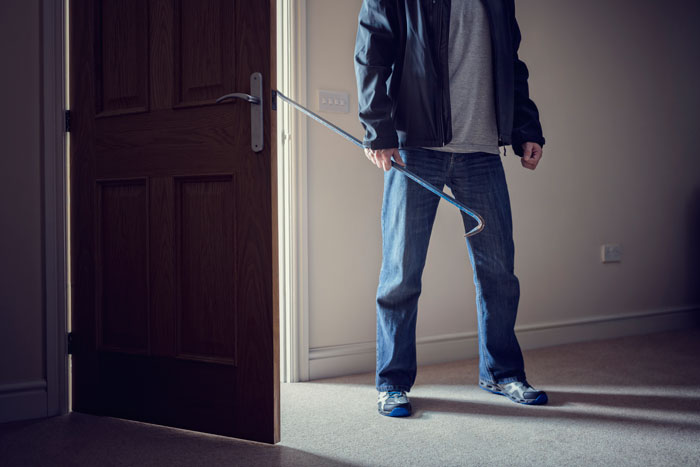
What Is the Difference Between Assault and Battery in California
If you think that assault and battery are the same thing, you’re mistaken. In California, assault and battery are two different crimes. The reason so many think they are the same charge is that it’s not uncommon for a person to be simultaneously charged with both, which means they’re linked in police reports and media write-ups.
According to California law, you’re guilty of assault if you commit an act that convinces the victim that they are in danger of either harmful or offensive contact. Battery is what happens when you actually carry through with the act. The way the laws are written, it’s quite common for someone to be charged with both assault and battery.
What Happens if You’re Charged with Assault
In order to be convicted of assault in California, you must have done something that indicated an unlawful attempt, coupled with a present ability, to commit a violent injury on the person of another.” The way the law is currently written, as long as the intent is there, you can be charged with assault even if you ultimately fail to go through with the act.
If you’re convicted of simple assault, the maximum sentence involves a $1,000 fine and/or up to six months in a county jail. If the assault involved a deadly weapon, you could be sentenced to as much as four years in a state prison and also be ordered to pay up to $10,000 in fines.
What Happens if You’re Convicted of Battery
Battery is one of California’s wobbler offenses which means that the circumstances surrounding the incident determine whether you’re charged with a misdemeanor or a felony.
In California, battery is any willful and unlawful use of force or violence upon the person of another. What this means is that if you threaten to hurt someone and don’t go through with the act, you cannot be charged with battery. On the other hand, if you go through the act and by some lucky chance the victim doesn’t get injured, you can still be charged with battery because you went through the with the intended action.
If you’re convicted of misdemeanor battery, you can be ordered to pay as much as $2,000 in fines and serve six months in prison. If you’re convicted of felony aggravated battery, you’ll be sent to prison and ordered to pay even larger fines. It’s likely the victim will also file a civil complaint against you.

What Parents Should Know About Fentanyl (Accidental Exposures to Fentanyl)
Every parent should be worried about fentanyl. It’s showing up with increasing regularity in common street drugs. Unfortunately, the synthetic opioid is often missed with common street drugs because it’s a cheap way to increase the potency of other drugs. Fentanyl is 50 times stronger than plain heroin and 100 times stronger than morphine. In some cases, it’s also deadly. With more than 150 USA deaths linked to fentanyl daily, parents should be concerned about their children encountering this opioid.
It’s a Common Drug Additive
Illegal drug makers love fentanyl because they can make it cheaply. Since it increases the effectiveness of the drugs they sell, adding fentanyl to the mix allows them to charge more money. The problem is that if even just a little too much fentanyl is added to the mix, it becomes deadly. And drug manufacturers aren’t careful about how much fentanyl they lace into their products.
Fentanyl is being found with increasing regularity in pressed pills. It’s highly likely any of the following drugs could be laced with fentanyl:
- Xanax
- OxyContn
- Hydrocodone
Your Child May Not Know They Are About to Consume Fentanyl
The increasing number of fatalities linked to fentanyl has made some teens and young adults wary of the opioid. Some try hard to avoid it. The problem is that there have been many instances where the person who suffered from a fentanyl overdose didn’t know the drugs they were using contained the product.
If you’re unable to curb your child’s drug habit, at least teach them how to use test strips that detect the presence of fentanyl. This drastically decreases the odds of them inadvertently suffering from a fentanyl overdose.
A Single Dose of Naloxone May Not Be Enough to Reverse an Overdose
The good news is that naloxone can help reverse a fentanyl overdose. The bad news is that a single dose may not be enough to complete the job. In most cases, it takes at least two doses of naloxone to stop the overdose.
The Sooner You Recognize the Signs of a Fentanyl Overdose, the Greater the Odds Become that Your Child Will Survive
A key component to surviving a fentanyl overdose is catching it and taking steps to reverse the process as quickly as possible.
Symptoms of a fentanyl overdose are:
- Extreme nausea
- Confusion
- Repressed breathing
- Constricted pupils
- Choking sounds
In addition to administering naloxone, as soon as you realize your child is overdosing, you need to contact 911. EMTs are trained in dealing with fentanyl overdoses and have the supplies needed to reverse the process. The sooner your child is in the capable hands of a medical professional, the better their chances of survival become

Jaywalking is Legal Again
Did you know that you can legally jaywalk in California?
That’s right; you’re free to cross the road whenever you feel like it, even if you’re not in a crosswalk. You can even do so right in front of a police officer, and they won’t be able to stop you or issue a ticket. How cool is that?
You should know that this newfound freedom to jaywalk to your heart’s content does come with a catch. Jaywalking in California is legal, provided you’re able to do so in a manner that’s considered safe.
Jaywalking in California became legal in January of 2023 when California’s CVC 21955 went into effect. When you read through the law, you’ll discover that jaywalking is perfectly legal in California, provided that you’re not in a collision while you’re jaywalking. The idea is that you are expected to pay attention and use good judgment before you walk across the road. If there is a reasonable chance that you’re jaywalking could result in a collision, either with you, another car, or even a pole/sidewalk/mailbox/etc. You will be the one who gets into trouble.
If you’re caught jaywalking in a spot where your action could trigger a collision, you will be issued a ticket. The base cost of the ticket is $196, but there will also be state fees, local fees, and assessments added to the ticket, meaning that you’ll owe significantly more than $200.
Have you enjoyed your new jaywalking privileges yet?

The Danger of Fentanyl | Fentanyl Awareness
When fentanyl was first starting to generate some media attention, the synthetic opioid was a good thing. It was a popular and extremely effective method to treat extreme pain. Doctors commonly prescribed it post-surgery, and patients with advanced cancer often used it to help control their pain. When used in a medical setting and under close supervision, fentanyl is a good thing.
The problem is that illicitly manufactured fentanyl isn’t used in a medical setting.
Fentanyl is extremely popular amongst the manufacturers of illegal drugs because it’s similar to heroin but even more potent. It is extremely common for heroin, meth, and cocaine to be laced with fentanyl. The addition of fentanyl enhances the effect of the other drugs. According to narcotics experts, fentanyl is 50 times more potent than heroin. The addition of fentanyl makes the other drugs extremely popular on the street and allows dealers to charge a premium. The problem is that fentanyl also makes the drugs more dangerous.
The CDC estimates that 150 people suffer a fatal fentanyl overdose every single day.
The symptoms of a fentanyl overdose are:
- Extreme nausea
- Confusion
- Repressed breathing
- Constricted pupils
- Choking sounds
If help is not received shortly after the first signs of a fentanyl overdose, the victim will lose consciousness and stop breathing. If they still don’t receive help, they will pass away. If you are near someone who has taken a suspected fentanyl overdose, calling the paramedics and dosing the victim with Narcan can help them survive the experience. According to LiveScience, Narcan is an effective treatment for fentanyl overdoses, but in 89% of the cases, more than one dose was required.
One of the reasons fentanyl is so dangerous is that some people don’t realize that they are using drugs that are laced with fentanyl or the fentanyl amount is higher than anticipated. The best way to detect the presence of fentanyl in drugs is to use fentanyl test strips which are relatively inexpensive and provide results in approximately five minutes. While the test strips are highly effective when determining if a supply of heroin or cocaine is laced with fentanyl, they won’t provide you with information about other popular and dangerous additives such as carfentanil.

How to Handle a Public Intoxication Charge
Most people assume that as long as they don’t drive after they’ve been drinking, they have nothing to worry about. What they don’t realize is that in California, you can be charged with public intoxication.
While it’s perfectly okay to drink in California, while you’re in public, you’re not allowed to drink to a massive excess. In California, there are two ways your drinking could result in your being charged with public intoxication.
The first is that you can’t be so drunk, you become a danger to yourself and to others. This means that if you leave the bar with the intention of walking home, but are so drunk you’re walking into traffic, picking fights, are doing something that makes the police think you’re endangering either yourself or others, you can be arrested. Its even possible that if you pass out on your walk home and are found by the police that in addition to taking you to the hospital for an exam, they will also charge you with public intoxication.
The other thing you can do that will prompt the police to arrets you for public intoxication is obstructing public ways. If your in the middle of sidewalk, public entrance, or road and people are unable to get around you, you’ll be taken to jail.
In California, public intoxication is a misdemeanor offense. While this isn’t as serious as being accused of a felony, if you’re convicted, you will have a criminal record. It is something employers and anyone else who runs a criminal background check on you will discover. While you can plead guilty to the charges right away, in the long run, it’s usually in your best interest to consult with an attorney who will look at the details surrounding your case and help you decide what the best and least life altering course is.
If you’re convicted of public intoxication in California, the maximum sentence you receive is six months in a county jail and/or a $1,000 fine. It’s common for individuals who are convicted of public intoxication in California to be ordered to take on community service and to pay a fine. In some situations, mandatory substance abuse awareness classes are part of the sentence.

The Best Way to Smoothly Get Through a Traffic Stop
Traffic stops are always a nerve-wracking experience, especially if you’re not sure why the cop is signaling for you to pull over. The good news is that there are some things you can do to make the entire process go more smoothly.
Don’t Try to Run
Many of us have a strange urge to try to run and evade the police, even when we know we haven’t done anything massively wrong. You need to ignore the urge. Not only will you put yourself in a position where you could cause an accident, but you will also get an even heftier ticket and possibly be charged with a misdemeanor. It’s in your best interest to take a deep breath and resign yourself to the fact that you’re getting pulled over.
Stay Calm
Getting upset isn’t going to help the situation but staying calm will. The calmer you are as the officer approaches your car, the smoother the traffic stop will go. Not only will you find it easier to understand what the officer is asking you when you’re calm, but you’re also less likely to do or say something that will irritate the officer. Calm drivers are far more likely to be let off with a warning than drivers who are upset and belligerent.
Find a Safe Place to Pull Over
Yes, you want to pull over shortly after the police signal you to stop, but you have the right to do so in a safe place. If possible, pull over into a parking lot or look for a place with a wide shoulder.
Don’t Argue With the Officer
If the officer writes a ticket, but you don’t think you’ve done anything wrong, don’t start arguing with the officer. It’s unlikely that the argument will do anything but make the situation worse. If you don’t think the ticket is fair, accept it when the officer hands it to you. Once you’re home, you can arrange to argue your case in front of a judge.
Don’t Over Share
When it comes to talking to the officer, you want to speak as little as possible. Yes, you want to be polite. Yes, you should answer their questions honestly. What you don’t want to do is inadvertently say something that could get you into more trouble. If you have passengers, they should remain quiet unless the officer asks them a direct question.
If you follow these tips, the next time you’re pulled over should be a smooth process.

Illegally Using a Handicap Placard in California
It’s so frustrating to drive all around a parking lot and not find any empty places to put your car other than a handful of spaces that are reserved for handicapped parking. All of us are tempted to slide into one of those spaces, especially when we only need the spot for a short time, at one point or another. The reason we don’t is because there is a heft ticket attached to doing so.
While the ticket for parking in a sport that has been set aside for handicapped parking is all it takes for most of us to keep looking for a space at the back of the lot, some people look for a different way to use the prime parking spaces. They create/steal/borrow a placard and use it whenever they want to park close to the building. Few realize just how much trouble they’ll get into for the action. If you’re caught, you could go to jail.
The law that deals with the misuse of a handicapped disability parking placard is California’s vehicle code 4461 VC.
The law does an extremely good job of making it clear that anyone who hasn’t been issued a disabled parking placard is not allowed to use it. When you read through the law, you’ll learn that you:
- Aren’t allowed to lend the placard to another driver with the knowledge that they’ll use it to park
- Allow someone else to use the placard when you’re not also in the vehicle and planning on going into the building
- Aren’t allowed to display a placard that has expired or been revoked
- Use a placard that was issued to someone else
- Create a forged placard
Most people who get into trouble for using a handicapped parking placard when they aren’t supposed to assume that they will be given a ticket and a hefty fine. They’re partly correct. What many don’t realize is that the illegal use of a disability placard is actually fraud and is against the law. Instead of getting a relatively simple citation, you’ll actually be charged with a misdemeanor. If you’re convicted, you could be sentenced to some jail time.
The reality is that most people who are convicted of the illegal use of a disability placard aren’t sent to jail. Some are required to do some community service and pay a fine. What catches some people off guard is how large a fine they will have to pay. The maximum fine for the illegal use of a handicapped parking placard is $1,000. If the judge does decide to include some jail time into your sentence, you could be ordered to spend as much as six months in a county jail.

What You Need To Know About Property Crimes in California
While the term property crimes gets tossed around by the media, in California, you aren’t going to be charged with a “property crime.” The reason for this is because, in California, the phrase property crime is actually a blanket term that’s used to describe multiple crimes.
The four most common property crimes in California are:
- Arson
- Theft
- Burglary
- Vandalism
If the media says that you have been charged with one or more property crimes, it means you’ve been charged with one or more of these offenses.
Arson is pretty self-explanatory. Arson happens when you deliberately set fire to a property. In California, arson is always a felony. If you’re convicted, you will spend anywhere from 16 months to nine years in prison. One of the big factors that determines how long you’re incarcerated includes if you set fire to your own personal property, if the burned structure was inhabited, and if anyone suffered a serious injury as a result of the fire.
One of the interesting things about arson is that it’s the only property crime you can be charged with, even when the property is your own.
There are multiple types of theft charges in California. For a theft to be considered a property crime, it had to have been committed on someone else’s property. Examples of theft that fall into the category of property crime include:
- Shoplifting
- Grand theft auto
- Robbery
- Embezzlement
- Package theft
Whether your charges are for misdemeanor theft or felony theft depends on the collective value of what was stolen. If the property was less than $900, you’d only face misdemeanor theft charges. If it exceeded $900, you’d be charged with a felony.
Most people not only think of burglary as a property crime but also as a violent crime. To be charged with burglary in California, not only do you have to break into someone’s property (house, barn, shed, storage unit), but you have to do so for the purpose of stealing something. If you’re convicted of second-degree or first-degree burglary in California, you’ll face up to 20 years in a California state prison.
Vandalism, while serious, is often considered the most minor of California’s property crimes. Vandalism is simply the destruction of someone else’s property. To be convicted of vandalism in California, you had to intentionally create the damage and knew the property wasn’t yours. The degree of punishment connected to vandalism in California depends on how much damage was caused. Restitution is often part of the sentence.

Understanding How Bail Works With Absolute Bail Bonds
We understand how bail can be a stressful and confusing situation. Let us reduce your stress as our professional and fully licensed bail bondsmen walk you through the bail bond process, answering all your questions.
The bail bond process is quite simple. Of course, there is going to be its share of legal print, but overall, it’s very understandable.
Question: What is a bail bond for?
Answer: A bail bond is a written promise that the defendant will pay a fixed amount of money for his or her release from jail. The fixed amount will be 10% of the full bail amount.
Question: Does the full fixed amount need to be paid upfront before the defendant can be released?
Answer: No. The bail bond company will calculate a workable payment plan the defendant will be released from jail and following that, payments on the bail bond will continue to be made.
Question: What are the contingencies?
Answer: The defendant is required to show up for all court dates. If the court has additional mandates, like attending counseling, staying away from someone, or someplace, and not leaving the state, for example, the defendant will need to abide by these as well.
Question: What if they don’t?
Answer: The bail bond will be revoked, and the defendant will be taken back into custody. In addition, the full bail amount may need to be paid off.
Question: Is the money refundable at the end of the trial, if my loved one obeyed all his or her orders?
Answer: No. Think of the fixed price for the bail bond as a fee for the bail bond services. But, most people use bail bonds to bail out of jail because, in the long-term view, it is more affordable for them.


